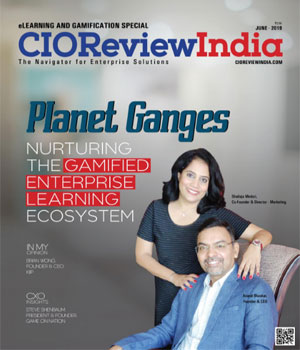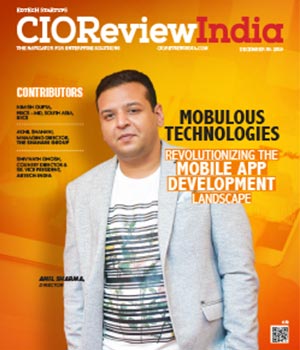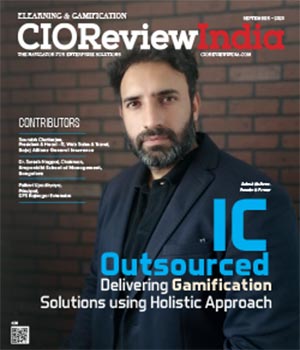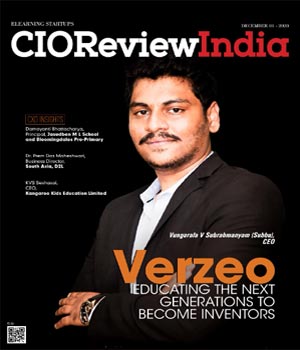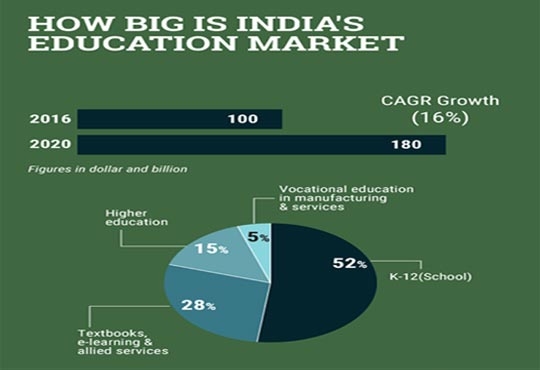
The New Normal for Enterprise Software
Gaurav Kataria, CIO, Cyient | Thursday, 23 March 2017, 10:02 IST
 It’s a Sunday morning. James, the CEO of a mid-size company, Mountain Inc., is at the airport lounge waiting to catch his connecting flight. He has six hours to kill and gets talking to a fellow passenger, Rick, who turns out to be the CEO of a large private equity fund. The conversation traverses from world economy to politics, to the companies they work for. During their conversation, Rick gets interested in what James’ company does, and they start to talk about the specifics, the financials, business processes, and future plans of Mountain Inc. James fires up his laptop to demonstrate online his business processes and pulls out multiple presentations and spreadsheets to share how their company has grown over the past decade. He also talks about the investments they have made in enterprise solutions to manage the business processes. After a few hours, they part ways with an agreement to meet again.
It’s a Sunday morning. James, the CEO of a mid-size company, Mountain Inc., is at the airport lounge waiting to catch his connecting flight. He has six hours to kill and gets talking to a fellow passenger, Rick, who turns out to be the CEO of a large private equity fund. The conversation traverses from world economy to politics, to the companies they work for. During their conversation, Rick gets interested in what James’ company does, and they start to talk about the specifics, the financials, business processes, and future plans of Mountain Inc. James fires up his laptop to demonstrate online his business processes and pulls out multiple presentations and spreadsheets to share how their company has grown over the past decade. He also talks about the investments they have made in enterprise solutions to manage the business processes. After a few hours, they part ways with an agreement to meet again.
The team of Buyout Inc. has been evaluating the acquisition of Talent Inc. for the past two months, and they are now down to the final negotiations. All through the process, Talent Inc. has shown solid financials, service capabilities, and a great team. The one thing that is still bothering Ms. Laura, CFO, Buyout Inc., is the absence of a logical reason as to why Talent Inc. is up for sale. It’s a Wednesday afternoon and teams from the two companies are in the midst of intense negotiations. Ms. Laura requests for a break and returns with a request to see the financials again this time via an online records system rather than on the traditional PowerPoint presentations. Talent Inc. struggles to explain the financials, citing constraints about setting up of an online records system. The deal does not go through.
Back to reality just two months ago, I got to know of a deal similar to the one between Buyout Inc. and Talent Inc., with the exception that the buying company paid about 15 percent extra, as the efficacy of the enterprise systems in the target company gave them full confidence in the target company.
More often than not people confuse enterprise software as being the same as enterprise resource planning (ERP) software, but that’s not correct. Enterprise software should be viewed as a collection of software with common business applications and tools for modelling how the entire organization works. Enterprise software can potentially improve the organization's productivity and efficiency.
Enterprise software typically enables processes like online payment processing, automated billing systems, security, enterprise content management, IT service management, customer relationship management, enterprise resource planning, business intelligence, project management, collaboration, human resource management, and manufacturing execution systems, to name a few.
Enterprise software has been in existence for the past many decades. It has been the cornerstone for enabling business processes for many organizations, but the return on investment (ROI) has been a mixed bag. Let us look at ERP as an example. While most organizations which jumped onto the ERP bandwagon have gained from it, and many are still struggling to justify the millions they invested.
Today we live in a business environment that is volatile, uncertain, complex and ambiguous (VUCA, as it is referred to sometimes), and this calls for organizations to be nimble when it comes to strategies and business processes alike. The underlying IT systems that enable these processes need to adapt at the same or faster pace, almost predicting what is about to happen.
Coupled with the volatility in business environment, the disruption of the technology landscape due to the advent of social, mobile, analytics and cloud (SMAC), has led to the change in clients’ expectations.
In 2009, McKinsey came up with the term, “New Normal”, which defined the way expectations need to reset in the post-downturn era. This concept of the New Normal was adopted by many companies, business units and departments to reset their strategies to match the environment. It is time, again, for enterprise software firms to press the Ctrl-Alt-Del buttons, reboot, and adapt to the new normal. In this new nimble business environment, technology firms need to re-think how they can support businesses rather than become roadblocks.
VUCA + SMAC = New Normal for Enterprise Software
Over the last three years, large companies like Microsoft, SAP and Oracle etc. have made significant investments to graduate to the New Normal. On the other hand, companies like Workday, ServiceNow, SalesForce and Tabalue were born in the cloud and have had a significant edge in their approach to addresses the demands of the new normal.
For firms and service providers who are still playing wait and watch, all that I can say is the New Normal is for real and the time to hit the Ctrl-Alt-Del buttons is now.
CIO Viewpoint
Cloud Enabled Edtech Spaces Enriching Learning...
By CIOTechOutlook Team
Challenges and Issues of Online classes
By R. Chandran, Chief Information Officer, Bahwan Cybertek
Educational Technology, Digital Learning In The...
By Swati Sankhye, Chief Information Officer, MIT World Peace University
CXO Insights
Optimon: Smart Manufacturing Solutions...
By Srinivas Kallakurchi, President & Chief Strategy Officer
Education Should Be A Want And Not A Need
By Dr. Prem Das Maheshwari, Business Director, South Asia, D2L
Current Industry Trends In Education





